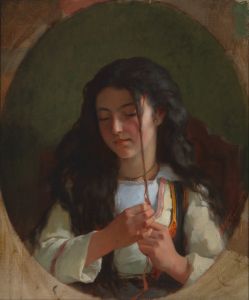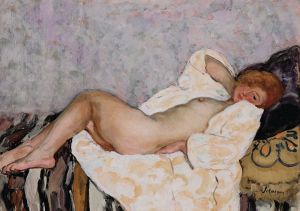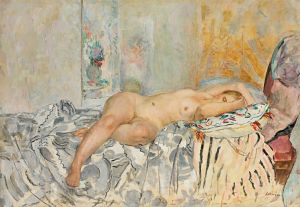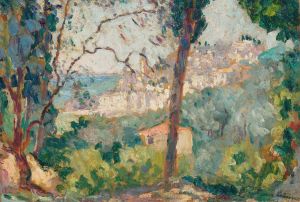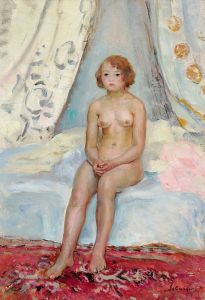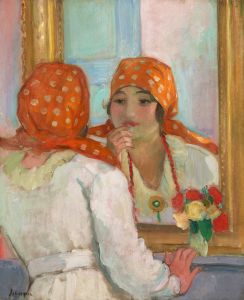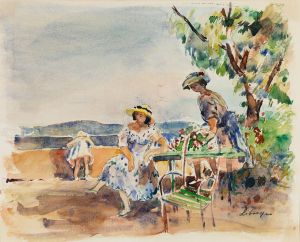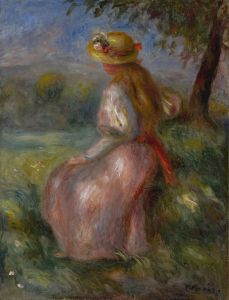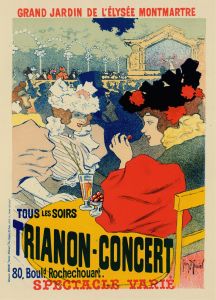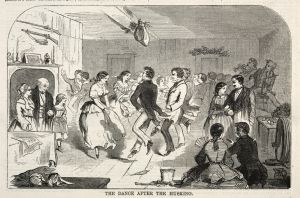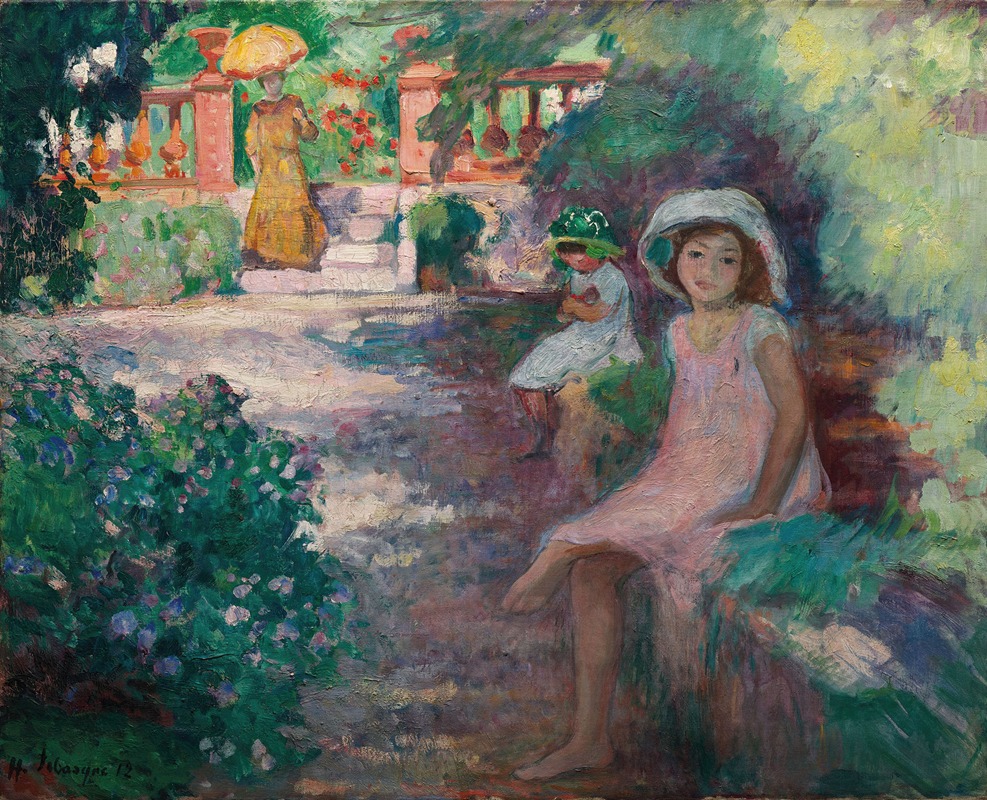
Sous les mimosas
A hand-painted replica of Henri Lebasque’s masterpiece Sous les mimosas, meticulously crafted by professional artists to capture the true essence of the original. Each piece is created with museum-quality canvas and rare mineral pigments, carefully painted by experienced artists with delicate brushstrokes and rich, layered colors to perfectly recreate the texture of the original artwork. Unlike machine-printed reproductions, this hand-painted version brings the painting to life, infused with the artist’s emotions and skill in every stroke. Whether for personal collection or home decoration, it instantly elevates the artistic atmosphere of any space.
Henri Lebasque, a notable French post-impressionist painter, created the artwork "Sous les mimosas" during his prolific career in the early 20th century. Lebasque is renowned for his use of light and color, and his works often depict serene domestic scenes and landscapes imbued with a sense of warmth and intimacy. "Sous les mimosas" is a testament to his mastery in capturing the gentle nuances of light and the tranquil beauty of nature.
Henri Lebasque was born on September 25, 1865, in Champigné, France. He began his artistic education at the École des Beaux-Arts in Angers and later moved to Paris, where he continued his studies. In Paris, Lebasque was influenced by the vibrant art scene and came into contact with several prominent artists of the time, including Pierre Bonnard and Édouard Vuillard, who were associated with the Nabis group. This exposure significantly impacted his style, leading him to explore the use of color and light in innovative ways.
"Sous les mimosas" exemplifies Lebasque's characteristic style, which often features a harmonious blend of impressionism and modernism. The painting portrays a tranquil scene under the shade of mimosa trees, capturing the dappled sunlight filtering through the foliage. Lebasque's use of soft, pastel colors and fluid brushstrokes creates a sense of calm and relaxation, inviting the viewer to immerse themselves in the idyllic setting.
Lebasque's choice of subject matter in "Sous les mimosas" reflects his interest in capturing the simple pleasures of life. His works frequently depict leisurely activities, family scenes, and the beauty of the French countryside. This focus on everyday life, combined with his skillful use of color and light, earned him the reputation of being the "painter of joy and light."
Throughout his career, Lebasque exhibited his works in various prestigious venues, including the Salon des Indépendants and the Salon d'Automne. His paintings were well-received by critics and collectors alike, and he gained a loyal following for his ability to convey emotion and atmosphere through his art.
"Sous les mimosas" is a fine example of Lebasque's ability to evoke a sense of place and mood. The painting's composition and color palette reflect the influence of both impressionism and the emerging modernist movements of the early 20th century. Lebasque's work is often compared to that of his contemporaries, such as Henri Matisse and Pierre Bonnard, yet he maintained a distinct style that set him apart.
Henri Lebasque continued to paint and exhibit his works until his death on August 7, 1937. His legacy endures through his contributions to the post-impressionist movement and his influence on subsequent generations of artists. Today, his paintings, including "Sous les mimosas," are held in high regard and can be found in numerous public and private collections worldwide.
In summary, "Sous les mimosas" by Henri Lebasque is a quintessential example of the artist's ability to capture the beauty and tranquility of everyday life through his masterful use of color and light. The painting remains a testament to Lebasque's enduring appeal and his significant role in the development of modern art.





